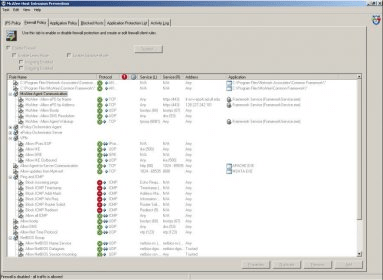Imagine your computer as your home. You have a firewall, like a sturdy front door, keeping out obvious threats. But what about burglars who manage to sneak in a window? That’s where Host Intrusion Prevention Software (HIPS) comes in.
It acts like an internal security system, constantly monitoring your computer’s activity for suspicious behavior. In today’s digital landscape, where sophisticated malware and targeted attacks are increasingly common, relying solely on traditional antivirus software is simply not enough.
HIPS offers an essential layer of defense, proactively identifying and blocking malicious actions before they can cause damage. This article will delve into the intricacies of HIPS, exploring its key functionalities, different deployment strategies, and how it can dramatically improve your system’s security posture.
Prepare to discover how HIPS can transform your endpoint security from reactive to proactive, keeping your data safe and your peace of mind intact.
Understanding Host Intrusion Prevention Software (HIPS)
Navigating the digital landscape requires robust defenses. Host Intrusion Prevention Software (HIPS) provides a critical layer of protection, guarding individual systems from malicious activity.
It’s like having a vigilant security guard stationed directly on your computer, constantly monitoring for suspicious behavior and blocking threats before they can cause harm.
This contrasts with network-based systems, which observe traffic across a network. HIPS focuses on the internal workings of a single machine.
This localized approach allows for deeper scrutiny of processes and application behavior, leading to early identification and prevention of potential breaches.
How HIPS Works: A Deep Dive
HIPS operates by analyzing system activities against a predefined set of rules and policies. It scrutinizes everything from file access to registry modifications.
Think of it as a highly observant detective, watching for subtle clues that might indicate malicious intent. When it spots something amiss, it takes action.
These actions can include blocking the suspicious process, quarantining the infected file, or alerting the user and security administrators.
This proactive stance distinguishes HIPS from traditional antivirus, which primarily relies on signature-based detection of known malware. HIPS looks at behavior.
Behavioral analysis lets HIPS identify zero-day exploits and unknown malware variants that signature-based detection would likely miss, adding a safety net.
Key Benefits of Implementing HIPS

Implementing HIPS provides a multitude of benefits, chief among them enhanced endpoint security. It acts as a barrier, thwarting many attacks.
It greatly reduces the window of opportunity for attackers to exploit vulnerabilities. Speed is critical; HIPS works fast.
It also offers detailed logging and reporting capabilities, aiding in incident response and forensic analysis. This data is invaluable for understanding attacks.
By providing an extra layer of protection, HIPS helps organizations meet compliance requirements, reducing the risk of fines and penalties associated with data breaches.
Integrating HIPS can also improve the overall security posture by complementing existing security solutions, such as antivirus and firewalls. Layered defense is always strongest.
Choosing the Right HIPS Solution
Selecting the appropriate HIPS solution requires careful consideration of several factors. Think about your organization’s particular needs and requirements.
Evaluate the HIPS solution’s detection capabilities. Does it effectively identify a wide range of threats, including zero-day exploits?
Assess the performance impact. Does the solution significantly slow down the system, hindering productivity? Balance protection and performance.
Consider the manageability of the solution. How easy is it to configure, update, and maintain? Choose one your team can effectively use.
Lastly, research the vendor’s reputation and track record. Select a trusted and reliable provider with a proven history of innovation. Read reviews and talk to peers.
Best Practices for HIPS Deployment and Management
Effective HIPS deployment requires a well-defined strategy. Start by conducting a thorough risk assessment of your environment.
Develop comprehensive security policies that clearly define acceptable system behavior. Use this as a foundation for HIPS configuration.
Configure the HIPS solution to meet your specific needs and risk tolerance. Fine-tune the settings to minimize false positives and negatives.
Regularly update the HIPS solution with the latest rules and signatures to stay ahead of emerging threats. Patching is equally important.
Monitor the HIPS logs and reports to identify potential security incidents and proactively address vulnerabilities. Analyze trends and adapt accordingly.